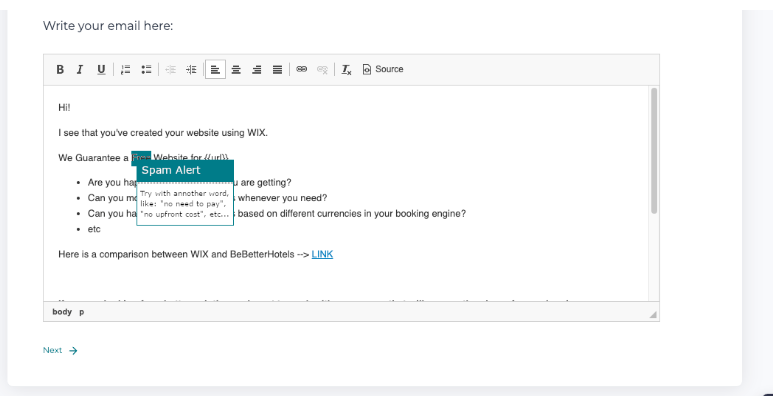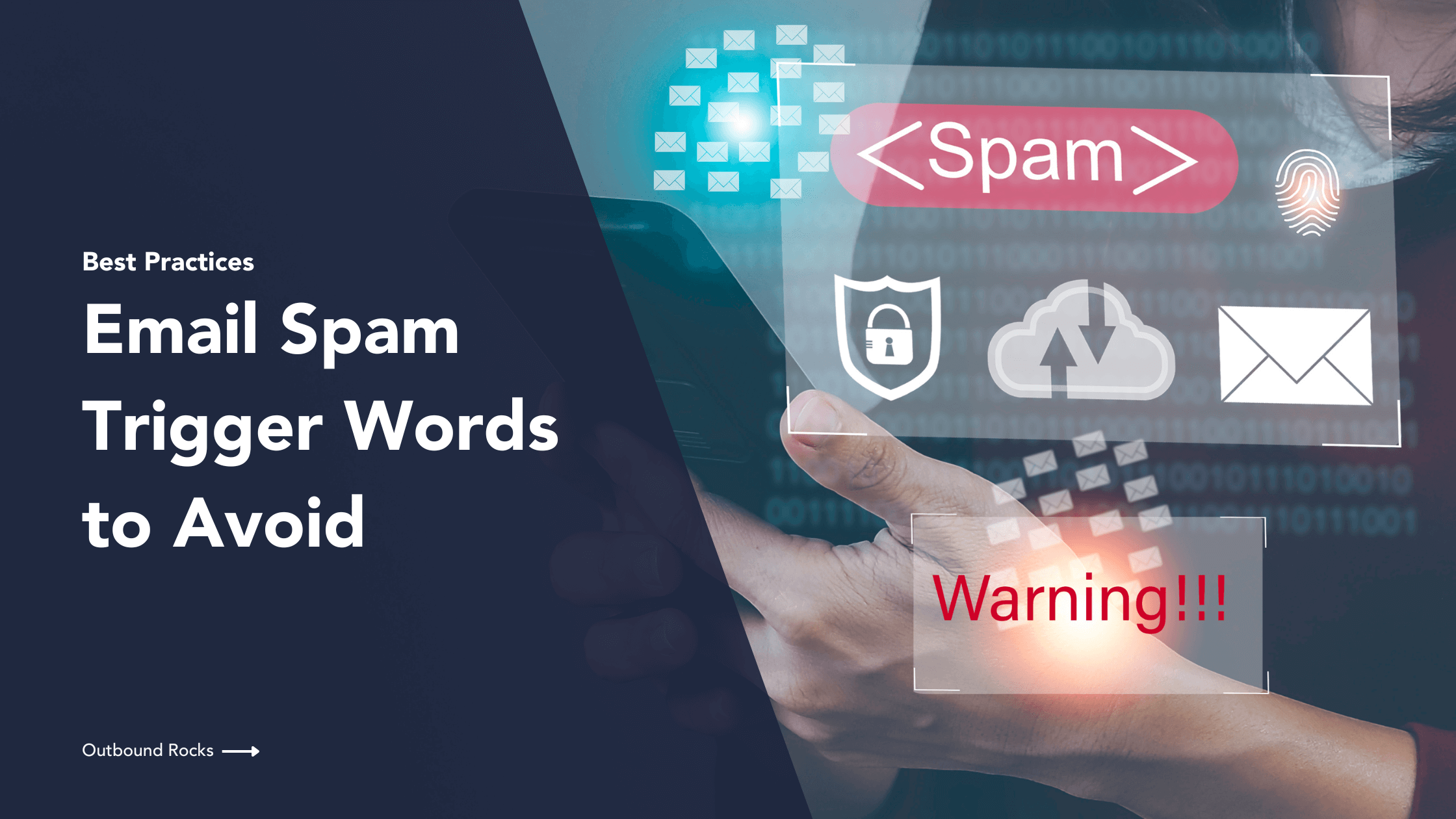When writing email copy, it’s important to be aware of words that can increase the risk of your email being marked as spam.
Writing effective email copy requires not only creativity, but also careful consideration of which words to include and which to exclude, especially in the subject line.
In this article, we’ll discuss how to create engaging and authentic email copy that won’t trigger spam filters, ensuring that it reaches the recipient’s inbox.
Let’s see how it’s done!
TABLE OF CONTENTS
– Why should you avoid spam trigger words?
– What are spam trigger words?
– Categories and types of words to avoid
– The most common spam phrases in sales and marketing
– Best practices to avoid spam filters
– Outbound Rocks email spam test
Why should You avoid spam trigger words in your email copy?
The reason for avoiding spam trigger words is simple – they have a notorious reputation for triggering spam filters or emulating spam-like behavior.
As a result, our emails may be marked as spam and relegated to the recipient’s spam folder.
And that’s something we want to avoid.
But…what exactly are these spam trigger words?
What are spam trigger words?
Spam trigger words are specific phrases that evoke negative emotions such as fear, urgency, loss, or psychological manipulation.
The effect of these words depends on the context in which they are used. This means that using a common word won’t necessarily trigger a spam filter. It’s how it’s used that matters.
For example, using the word “free” in an email is generally acceptable. However, using “free” repeatedly with other terms such as “free bank account” or “free housing” can raise red flags and lead to spam filtering.
Want to learn more? This is a powerful list of 70 spam trigger words to avoid in 2024. To read the article, please click on the image below:

What categories and types of words should you avoid?
It’s helpful to think of spammy words as signals of annoying behavior. Using this criteria, we’ve listed some spam trigger words based on a list of tree annoying behavior groups:
- Needy: Words like “help” and “need” can make your message seem desperate. Other examples include: 100%, 100% free, 100% satisfied, bargain, best price, bonus, discount, free, free gift, etc.
- Sleazy: refer to words used in spam emails and other online content that are designed to entice people to click on links, visite websites, or purchase products related to adult services such as “don’t hesitate,” “click here,” “debt,” “free,” “instant,” “month trial,” etc.
- Cheap and easy: phrases such as “free,” “100% off,” or “full discount” can come across as promotional and spammy.
Additionally, steer clear of cheap and easy phrases as they may be perceived as promotional and spam-like.

What are the most common spam phrases in Sales & Marketing?
While sales and marketing are essential to any business, there are certain words you should avoid to improve your email’s chances of reaching the inbox.
Remember, customers subscribe to your newsletter expecting relevant content, not pushy offers with extravagant claims.
That’s why we’ve listed some spam trigger words to avoid in this area:
- Click, Click below, Click here, Click to remove
- Deal
- Direct email
- Explode your business
- Fantastic deal
- For Only
- Free consultation
- Get, Get it away, Get it now
- Guarantee, Guaranteed
- Increase sales
- Incredible deal
- Join millions
- Limited time offer
- Marketing solutions
- Month trial offer
- No age restrictions
- No purchase necessary
- One hundred percent free
- Print form signature
- Removal instructions
- Satisfaction
- Save $, Save big money
- Sign up free today
- Subscribe
- Success
- This isn’t junk
- Weekend getaway
Best practices to prevent spam filters
In addition to correcting your subject lines, other critical details to consider include:
- Correct spelling and grammar: Take the time to edit and proofread your emails. Tools such as Editpad and Grammarly can help.
- Link to reputable sites: Only link to real websites with legitime domains. Avoid URL shorteners.
- Provide an unsubscribe option: Make it easy for recipients to unsubscribe. A hidden or missing unsubscribe button can lead to spam reports.
Another key point is implement email authentication systems to build trust with mailbox providers. Authenticated emails have a better chance of reaching the inbox.
In summary, is all about prevent spam filters, focus on correcting subject lines, ensuring proper spelling and grammar, linking to reputable sites and offering an easy unsubscribe option.
Email spam test by Outbound Rocks
To prevent your emails from being marked as spam we recommend using the spam checker module built into Outbound Rocks.
This module allows you to iterate and make changes to your email until you reach the best inbox placement.

By avoiding spam trigger words, you can successfully prevent your emails from being routed to spam folders.
Try OutboundRocks and see how just this feature can push your deliverability to new standards.
Sign up today!
